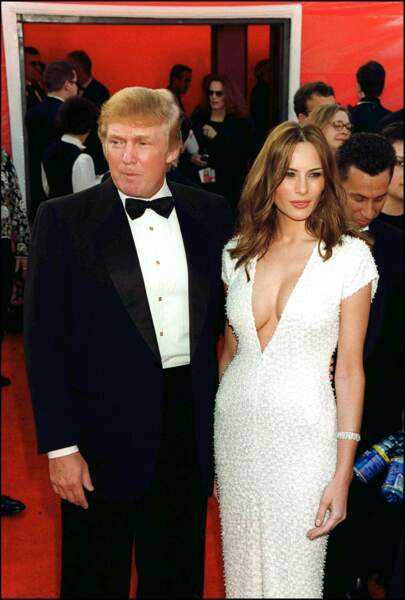Abstract

This research examined thinking out of skin color discrimination certainly one of mature African American men. Lookup signifies that compliment of bad African american stereotypes, out-group players (Whites) perceive light-skinned African People in america definitely and you can black-skinned African Us americans unfavorably. Although not, its unsure how treatment by for the-class players (most other African Us citizens) distinctively has an effect on dudes. Playing with data about 1995 Detroit Town Data and 2003 Federal Survey regarding Western Life, we investigated these relationships certainly African american guys symbolizing a wide variety of socioeconomic teams. We found that Ebony men’s attitudes regarding aside-group and also in-group treatment, respectively, was equivalent round the day. Light-skinned guys seen the least out-class discrimination when you are black-skinned men observed probably the most aside-category discrimination. During the appraisals away from pores and skin discrimination off inside the-class players, medium-skinned dudes thought of at least discrimination while you are one another light- and you can dark-skinned men identified so much more in the-group discrimination. In addition, guys out-of all the way down public financial groups was basically so much more impacted by body build bias than the others. Upcoming look is speak about brand new influence ones out- plus in-classification knowledge regarding skin tone discrimination into the public and mental functioning out of Dark colored men.
Certainly one of African People in america, pores and skin is an important bodily attribute that induce divisions into the the community and you will has an effect on standard of living. Instance gender, another person’s skin tone was a visible physical feature that other people immediately observe throughout societal connections and make use of to form judgments (Maddox & Gray, 2002). During American history, differences in skin color has resulted in socioeconomic condition (SES) variations among African Americans (Herring, Keith, & Horton, 2004; Keith & Herring, 1991). In addition, African Americans fool around with pores and skin differences to recognize on their own regarding for each and every almost every other, highlighting social standing hierarchies (Celious & Oyserman, 2001; Slope, 2002b). Considering the need for gender in the colorism (e.g. Huntsman, 2002), it will be possible one to African american guys will be impacted by skin tone prejudice in manners which aren’t but really certainly realized. Significantly, reflecting other social medications off manliness, Ebony men’s attitudes out-of skin tone discrimination can differ all over public groups. In this paper, we searched this chance for dudes in their thinking away from surface build discrimination out-of each other contained in this and you can beyond its racial class.
James S. Jackson
Inside the American history, bondage constituted a rigid status program you to definitely famous Black colored slaves of the the facial skin styles. Lighter-skinned slaves was in fact usually blended-raced and you may favored by Light servant-residents. These types of lighter-skinned submissives was frequently fathered because of the Light slave-residents (typically away from nonconsensual sexual interactions having women submissives) and you may was, ergo, blessed (Brownish, Ward, Lightbourn, & Jackson, 1999; Keith & Herring, 1991); instead of dark slaves, lighter-skinned slaves was indeed stored in person strenuous, backyard functions and you can as an alternative held residential interior operate particularly housekeeping during the better contact to help you Whites. Over time, such rights regarding the antebellum several months welcome light-skinned Blacks in order to become a lot more educated (Wirth & Goldhamer, 1944) in order to own a whole lot more assets (Frazier, 1957). Furthermore, to keep their top-notch condition and you can privileges, lighter-skinned guys involved with societal strategies in order to ban deep-skinned Blacks out of entering its societal groups; these means integrated the latest Paper british women vs american women Bag Decide to try, (and that prohibited Blacks out-of joining fraternities if the surface colour was basically black than just a brown papers handbag), brand new Comb try, (and therefore blocked Blacks with rough, diaper African hair if the combs couldn’t glide because of it) in addition to Blue veins people (and that prohibited Blacks whose body shades was as well ebony to see new blue blood vessels to their arms) (Thread & Bucks, 1992). These conclusions continuously revealed that white pores and skin resulted in obvious public and financial gurus.
This is simply not surprising one to early lookup conducted following emancipation away from submissives discovered that African People in the us was in fact influenced by colorism. Later lookup advised that African People in america always well-known body colour one to were exactly like their particular color (Hallway, 1992) while most other studies indicated that it highly well-known light surface styles no matter their unique color (Porter, 1991). Typically, psychologically, African Americans exactly who truly featured near the average, medium-brownish skin color (i.elizabeth. good prototypical shade) seemed to be secure within their racial term and you may was indeed new least stigmatized by African Americans (Hallway, 1992; Holtzman, 1973). However, people with facial skin tones on the tall ends up of spectrum (i.e., most dark and very light) educated a lower feeling of mastery (Holtzman, 1973; Thompson & Keith, 2001) or noticed less linked to almost every other African People in america (Celious & Oyserman, 2001). Overall, result of those knowledge had been adjustable; although white pores and skin might have been idealized, medium-skinned persons may have been a lot more protected within their name and you will attachment to African Us americans. Therefore, skin color prejudice would be complex-on top of that offering since useful otherwise disadvantageous with regards to the social context.
